How to Read a Panic Report Mac
Kernel panics are one of the last things any Mac owner wants to deal with. Your Mac will suddenly display a message, telling you at that place'due south been a fault, and then information technology will restart. If you were working on anything at the time, your progress can easily be lost.
Kernel panics happen when something goes incorrect with the macOS kernel. It's an essential role of Unix-based operating systems, including macOS. The nearly common cause of kernel panics is software errors, but they can be acquired by hardware faults as well.
If you observe yourself faced with kernel panics on your Mac, what can you practise? In this guide, we look at some of the best potential solutions.
Before we commencement
Subconscious processes that launch with your Mac might be the cause of kernel panics. With MacKeeper, it's easy to observe and remove them.
- In MacKeeper, select Login Items from the sidebar
- Click Start scan
- Select any items you want to remove
- Click Remove selected items
Install MacKeeper , and give information technology a go for yourself. Yous tin attempt each of MacKeeper's tools one time fully for costless, so it's well worth giving it a shot.
Mutual causes for Mac kernel panics
There are many reasons kernel panics happen on Macs. Incompatible software, for instance. Or device conflicts. In many cases, these kinds of issues aren't serious enough to cause a kernel panic, and your Mac just carries on working as normal. But if a problem is meaning enough, macOS might restart to protect your Mac.
Other reasons for Mac kernel panics include:
- Lack of RAM
- Full system deejay
- Disability to discover the root file system
- Missing file systems
- Incorrectly prepare or cleaved deejay permissions
How to deal with kernel panics on your Mac
Check out crash reports
macOS keeps all kinds of records about its functioning, including when it crashes. You can view these in the Console tool or open the crash log files from the DiagnosticReports folder in Library > Logs.
Here's how to view macOS crash reports:
1. Open up the Console app in Applications > Utilities
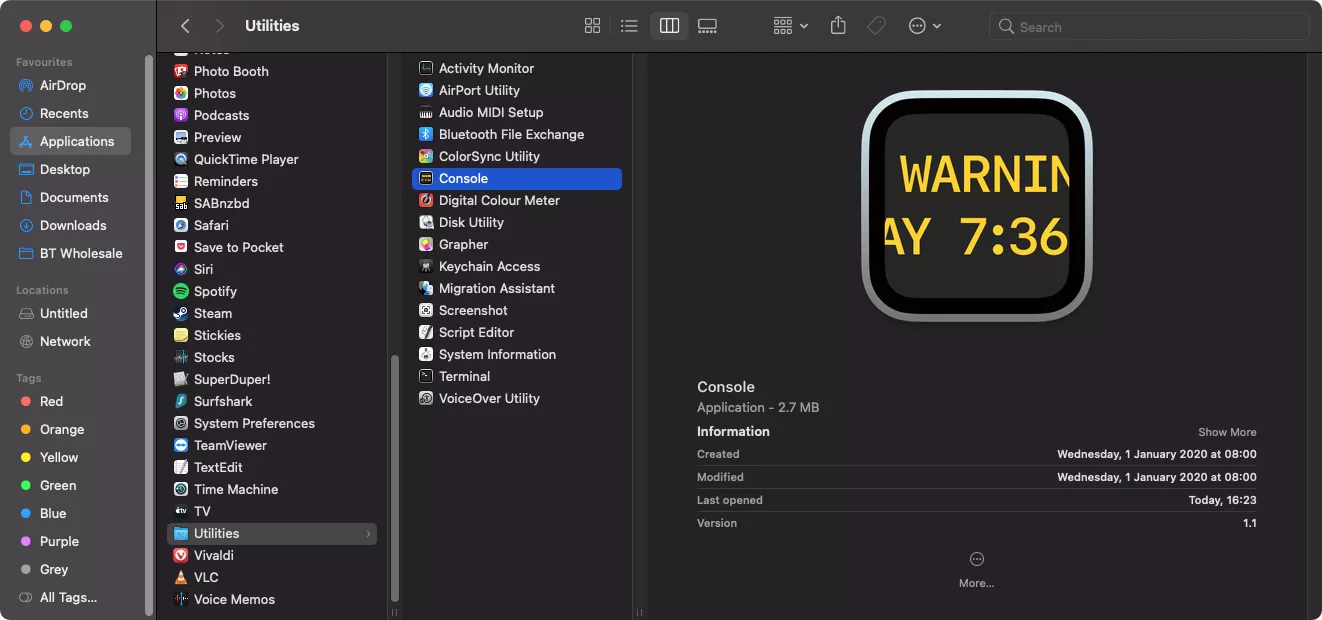
2. Select Crash Reports from the sidebar
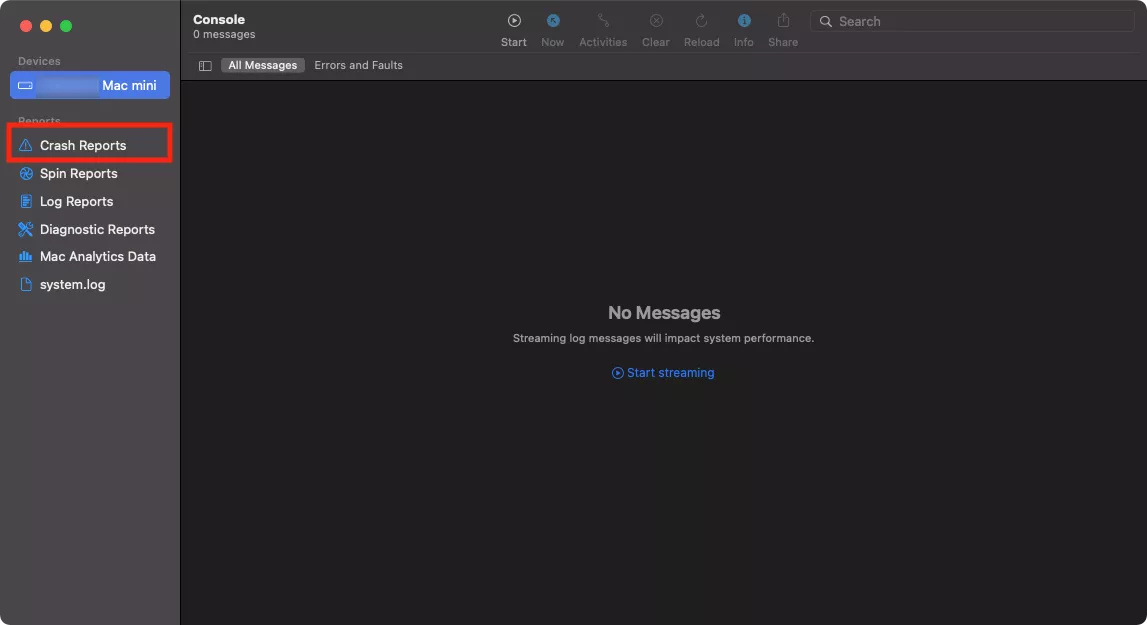
iii. If there are whatever crash reports, click on one, then look at the text in the study
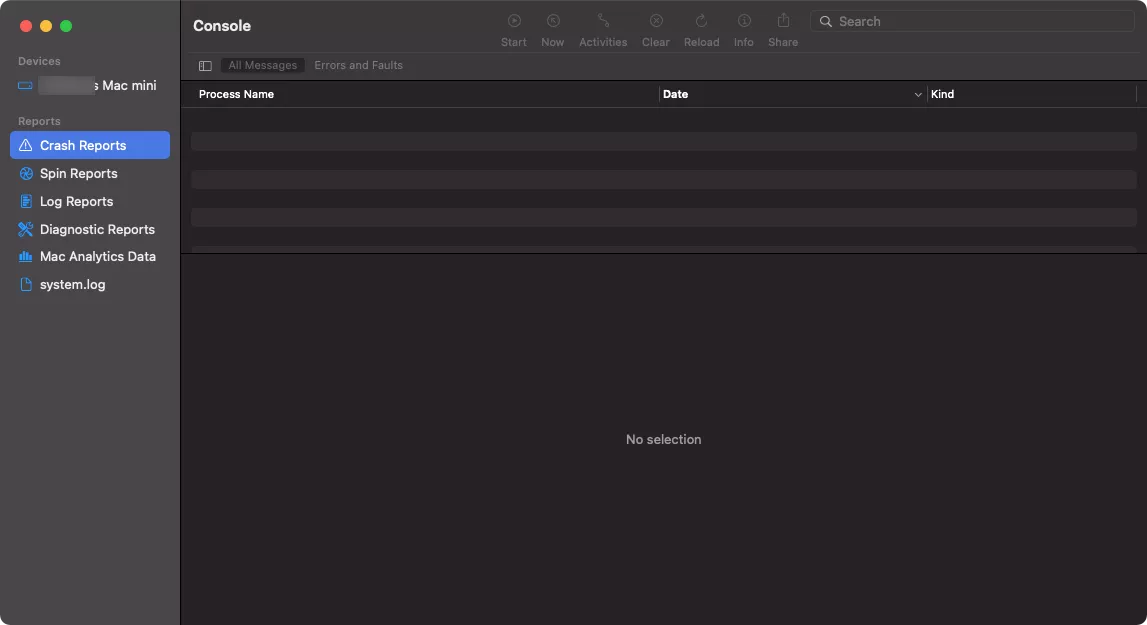
The first section of the report tells yous what the process that acquired the crash is. The second section informs you about the exact date and fourth dimension of the crash, besides equally the version of the OS.
The side by side department includes Exception details. There are two types you're interested in:
- EXC_BAD_ACCESS/KERN_INVALID_ADDRESS caused by access to unmapped memory
- EXC_BAD_ACCESS/KERN_PROTECTION_FAILURE caused past writing to read-only memory
The section afterwards this tells you the backtrace information, where you tin detect out which thread crashed and the events that led to this. With whatsoever luck, in that location'll exist some clues in these reports about what caused your kernel panic.
Restart in safe fashion
Safe manner is a good style to check if your Mac has a software problem. It starts macOS with only the drivers and apps it needs to run, so if y'all detect your Mac's kernel panics stop when y'all put your Mac in condom mode, at that place's a skillful take a chance it's the result of third-party software.
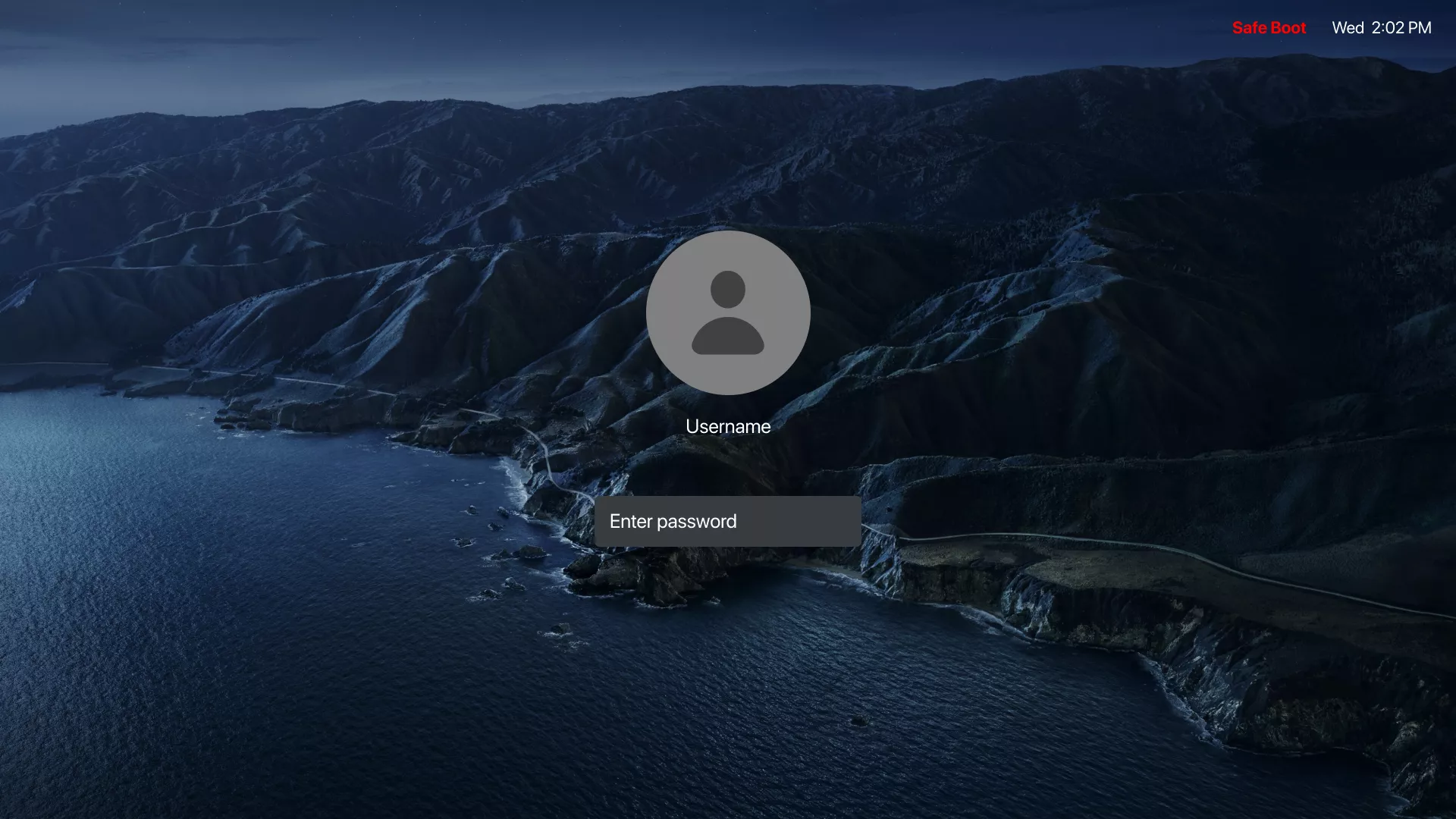
How to enter condom mode with an Intel Mac:
- Shut down your Mac, and wait 10 seconds
- Turn your Mac on, and immediately press and hold Shift
- Release the Shift primal when you come across the login screen
How to enter safe manner with an M1 Mac:
- Shut down your Mac, and wait x seconds
- Press and concord the ability push until the startup options window appears
- Select the startup disk
- Press and concord Shift
- Click Go along in Safe Mode, and then release Shift
Remove login items
It'south possible an app is starting up with macOS and causing bug. If that'south the instance, you can stop information technology from automatically running, which might fix your kernel panic effect.
Here's how to change login items in macOS:
ane. In System Preferences, open Users & Groups
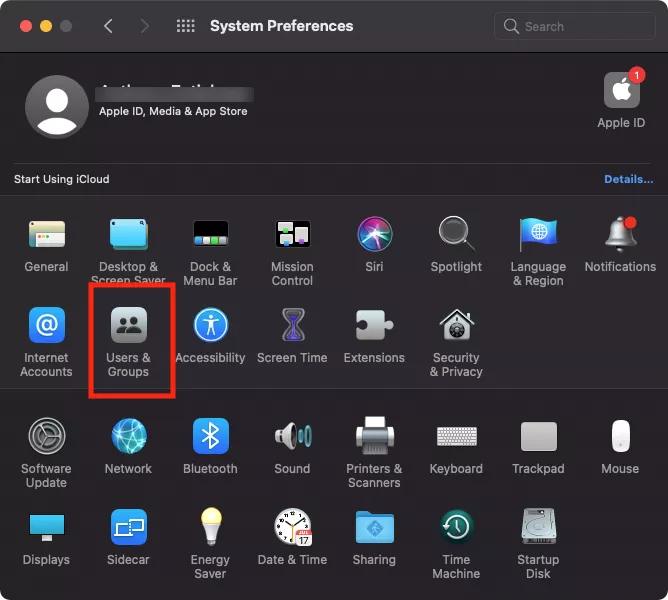
2. Click your proper name in the sidebar
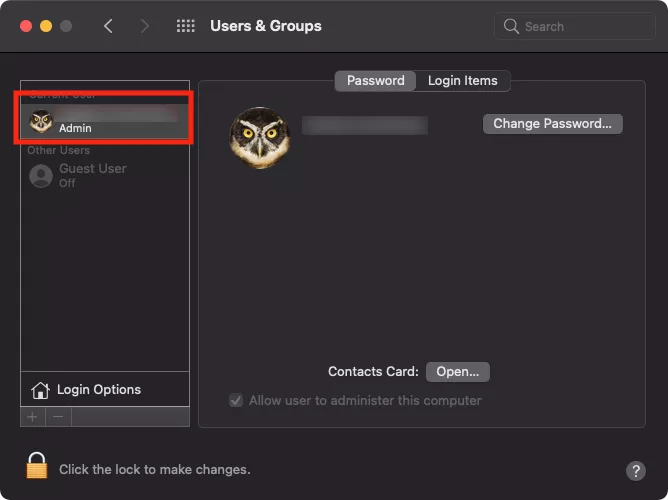
3. Select the Login Items tab
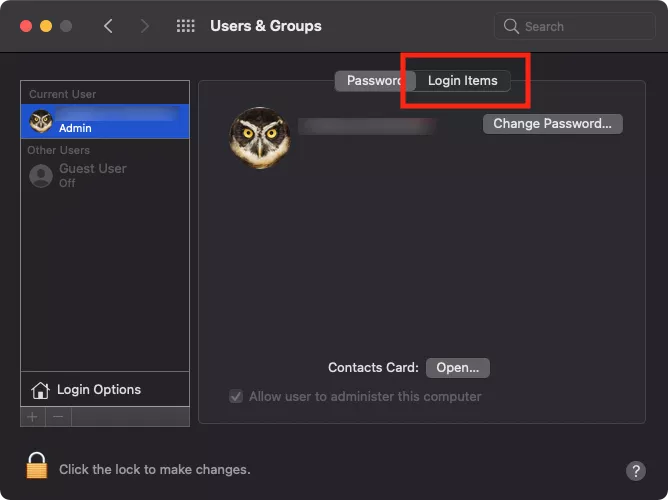
four. Click an app in the list
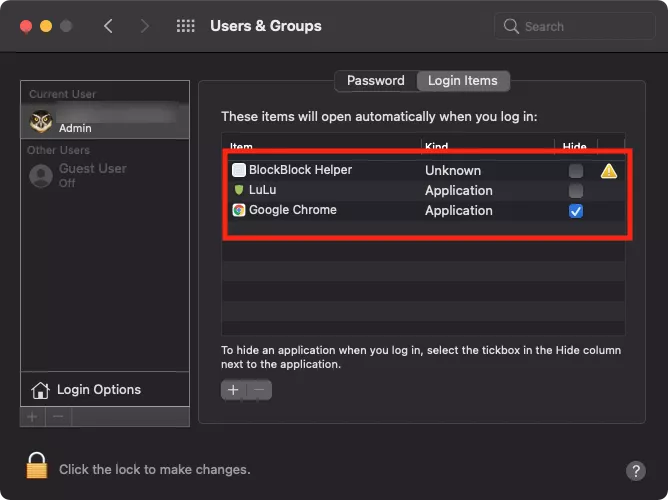
5. Click the minus button
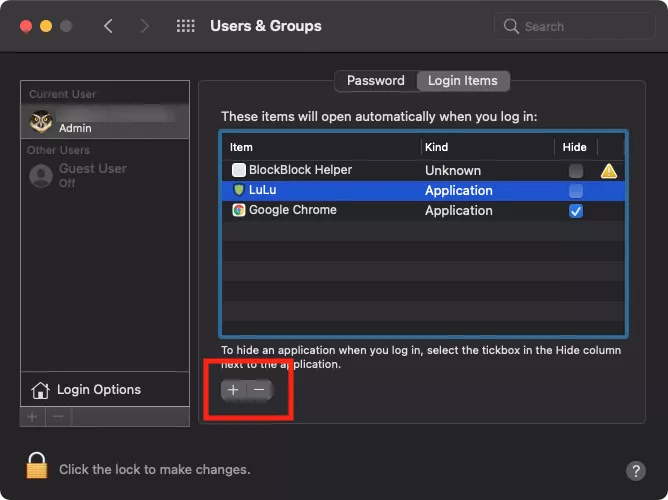
It's important to notation that this listing doesn't include all startup processes, which can include LaunchAgents and LaunchDaemons. You can delete login items manually or use something like MacKeeper to do information technology for you.
Check yous have enough disk space
Running your Mac with a full or almost total organization disk can cause stability issues, including kernel panic.
How to check your disk space on a Mac:
one. Click the Apple icon in the carte bar, and select Nearly This Mac
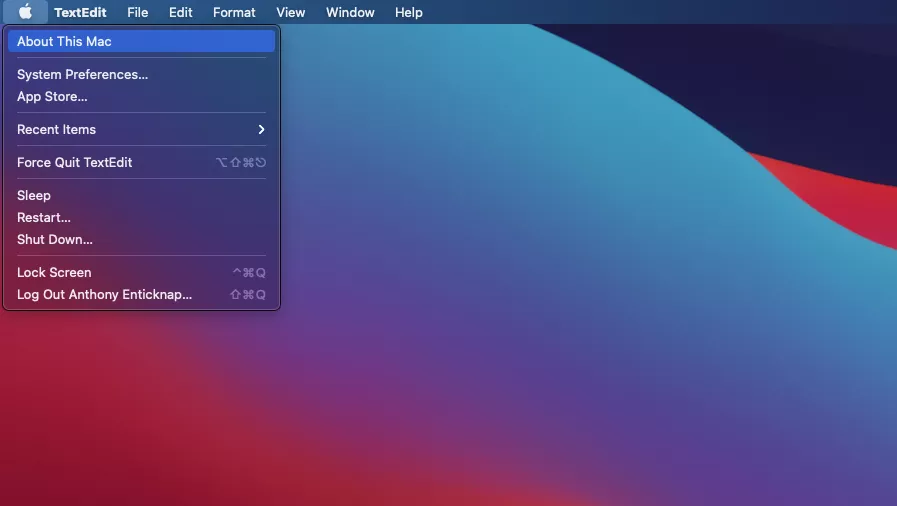
2. Click Storage
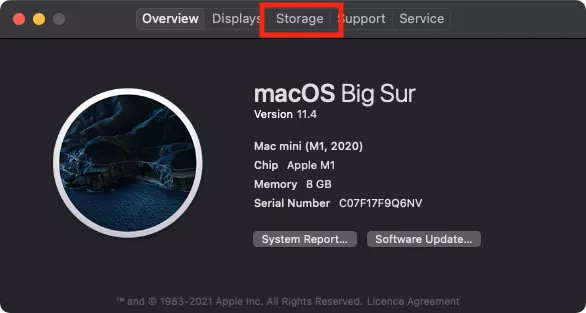
iii. Look at how much storage is available

iv. If you want to manage your storage, click the Manage button

Run Apple tree Diagnostics
Formerly known as Apple Hardware Exam, Apple tree Diagnostics is a tool built into macOS, which tests for hardware problems. This may be the crusade of your Mac'due south kernel panics. Before running information technology, disconnect everything from your Mac, other than the mouse, keyboard, monitor, power, and Ethernet cable, if you're using ane.
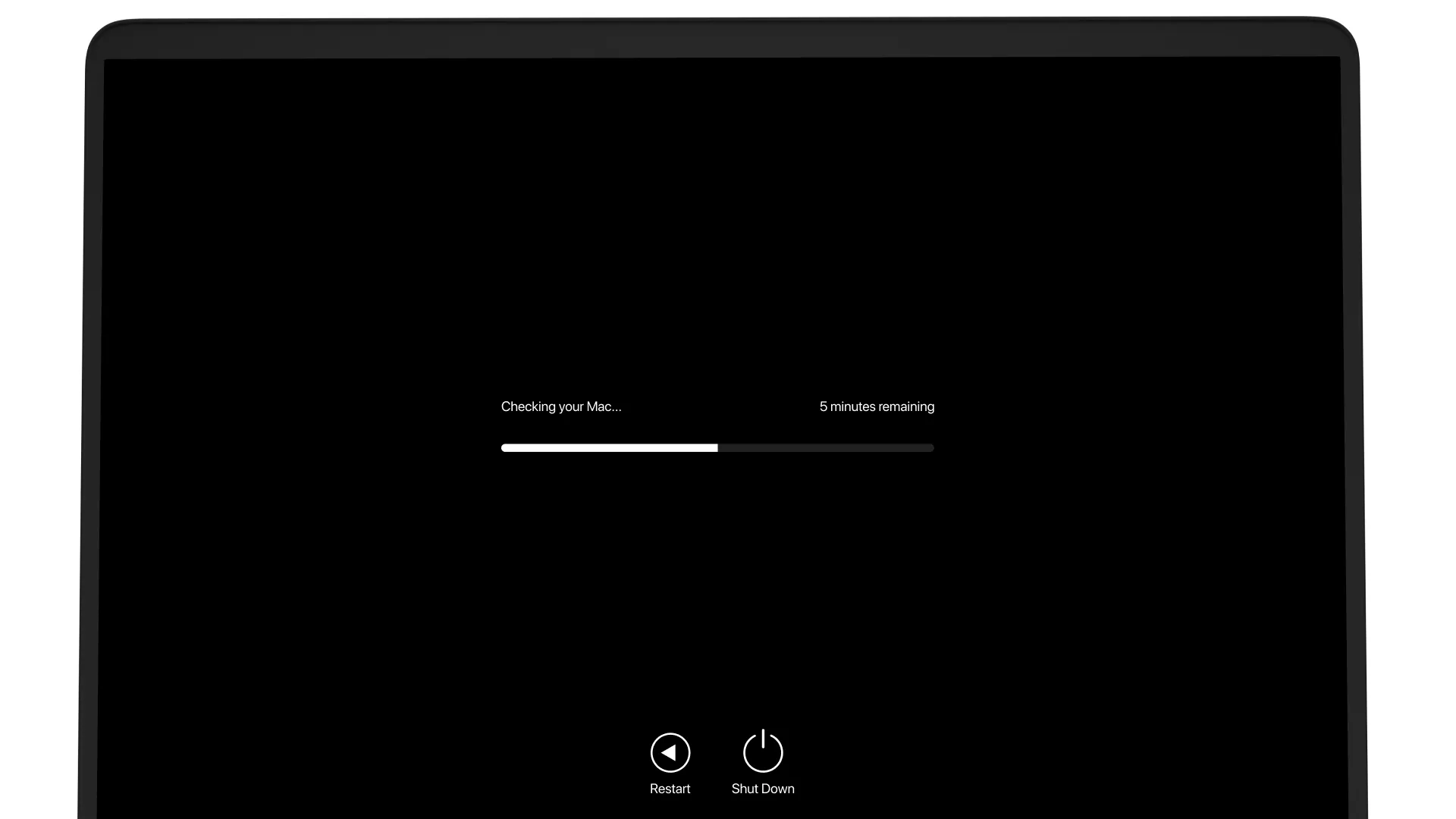
Here's how to run Apple Diagnostics on an Intel Mac:
- Shut downwards your Mac
- Turn on your Mac, and immediately press and concord the D key
- Release the D key when you encounter a progress bar or are asked to choose a language
Here's how to run Apple Diagnostics on an M1 Mac:
- Printing and hold the power push on your Mac
- Release the ability push button when you come across the startup options
- Press Cmd+D on your keyboard
Apple Diagnostics will now check your Mac'south hardware. You lot'll see a progress bar while information technology'due south doing this. When information technology'south finished, y'all'll go a report, which includes reference codes. Take a expect at Apple'southward reference code guidance to see what they mean.
Remove 3rd-party kernel extensions
macOS uses files called kexts (brusque for kernel extension) to add together functionality to the operating organization. These are all stored in the Library > Extensions binder. This is also where third-party extensions are installed. Just you should be very careful about deleting kext files, in example you delete one that macOS relies on. Information technology'south a skilful idea to bank check what third-party extensions you have installed, if any.
How to use Final to bank check for third-party macOS extensions:
1. Open Terminal from the Applications > Utilities folder
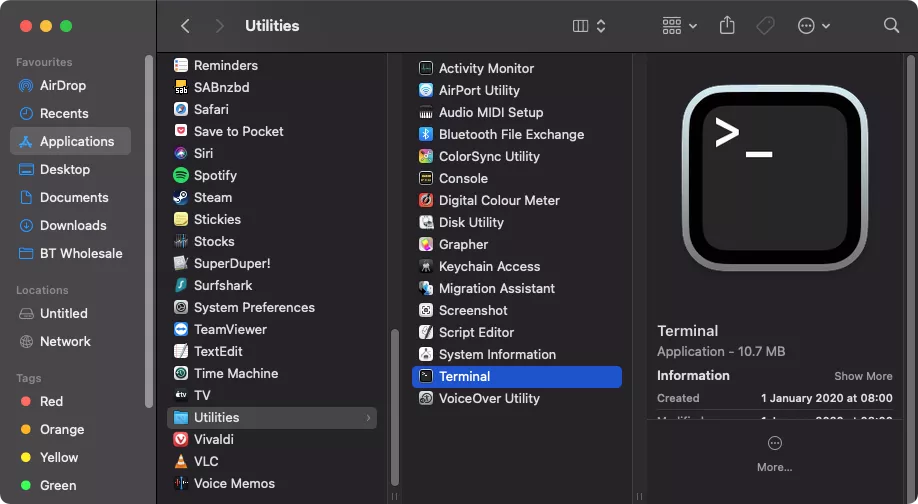
2. Type kextstat | grep -v com.apple, and printing Enter
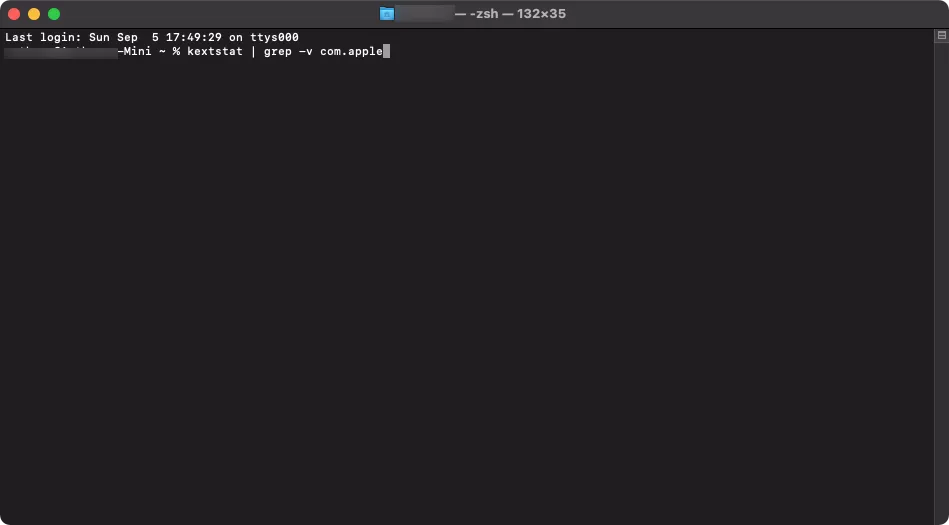
3. If you lot have any 3rd-political party extensions installed, they'll be listed here
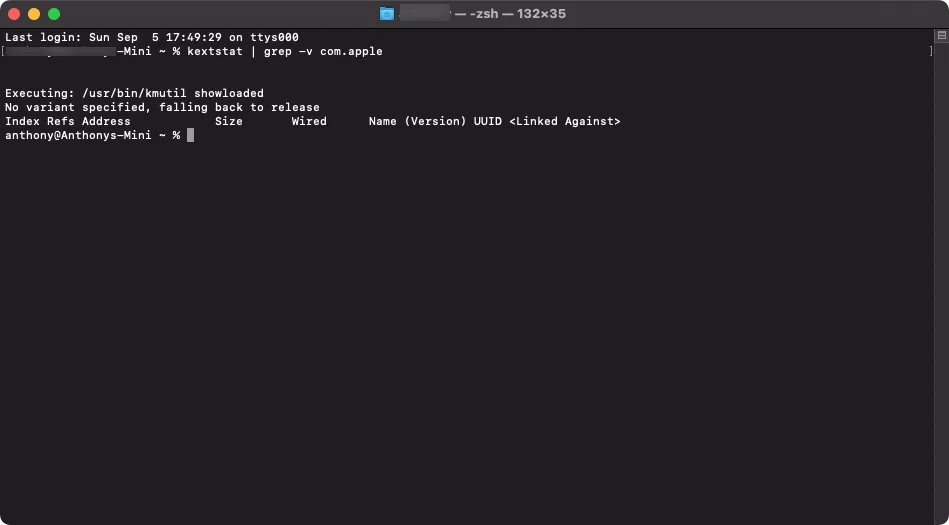
Once you've identified third-party extensions, you can discover them in the Extensions folder and delete them. Alternatively, apply a tool like MacKeeper's Smart Uninstaller to find and remove extensions for you lot. This avoids the risk of deleting default system extensions – which might cause more problems on top of your Mac'due south kernel panic issues.
Run First Aid in Disk Utility
Repairing errors on your Mac's system disk might help to ready kernel panics. You lot tin can do that easily using Disk Utility'southward Outset Aid function.
How to run First Aid on your Mac:
ane. Open Disk Utility from Applications > Utility
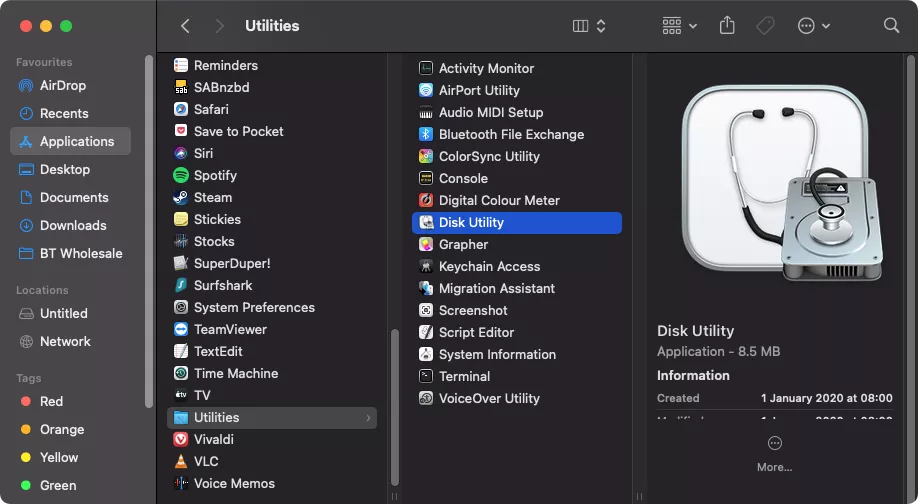
2. Select your system disk from the sidebar

three. Click First Assist
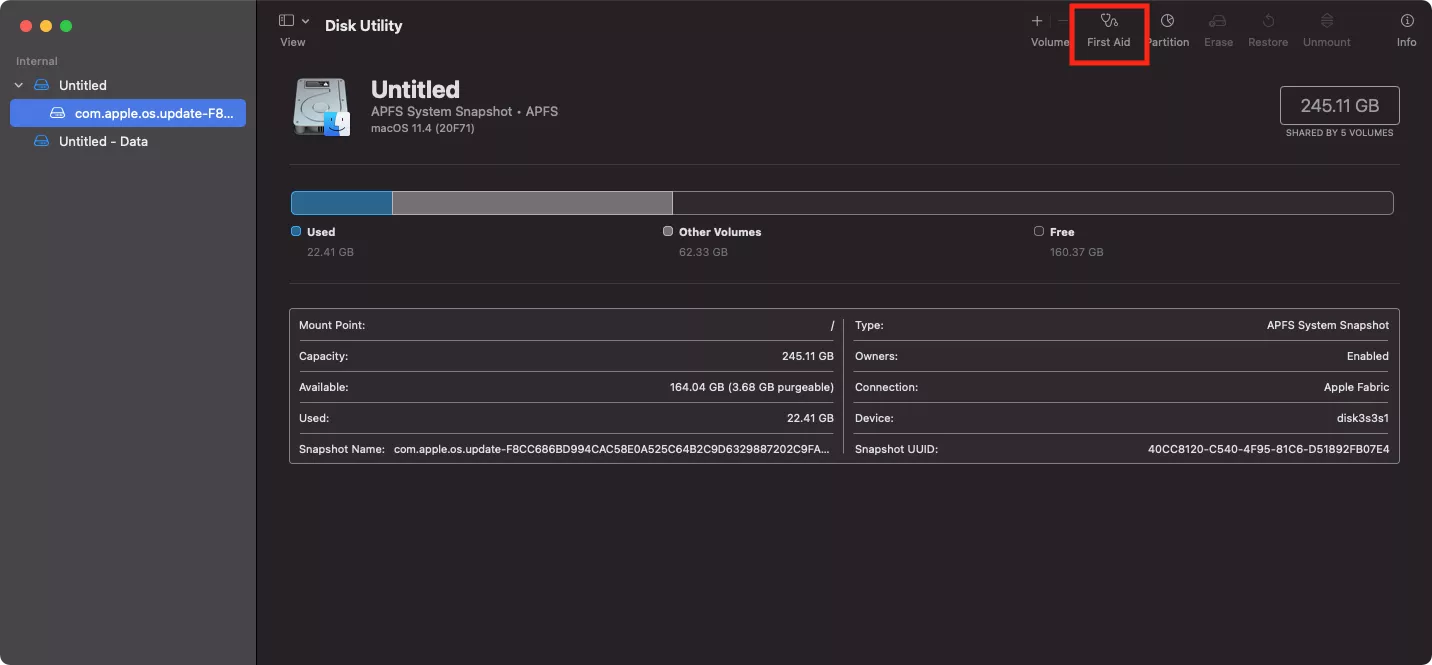
4. Click Run
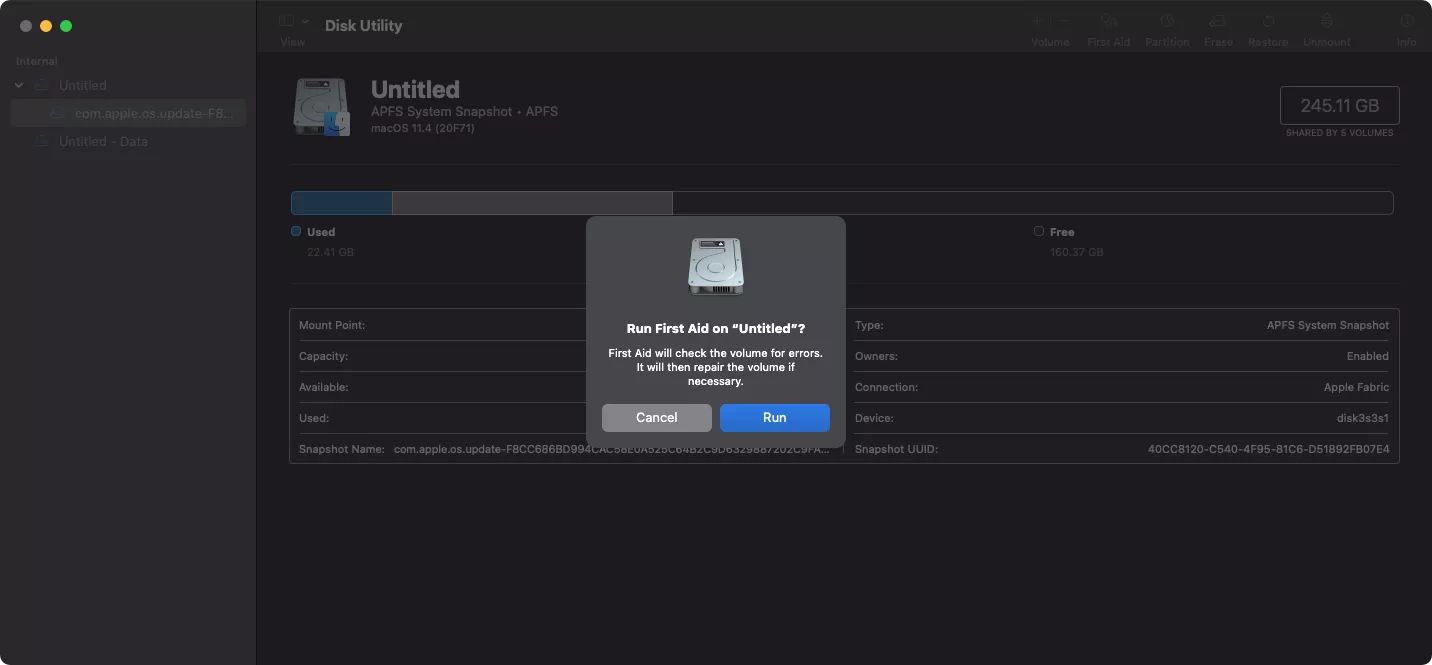
5. Click Continue
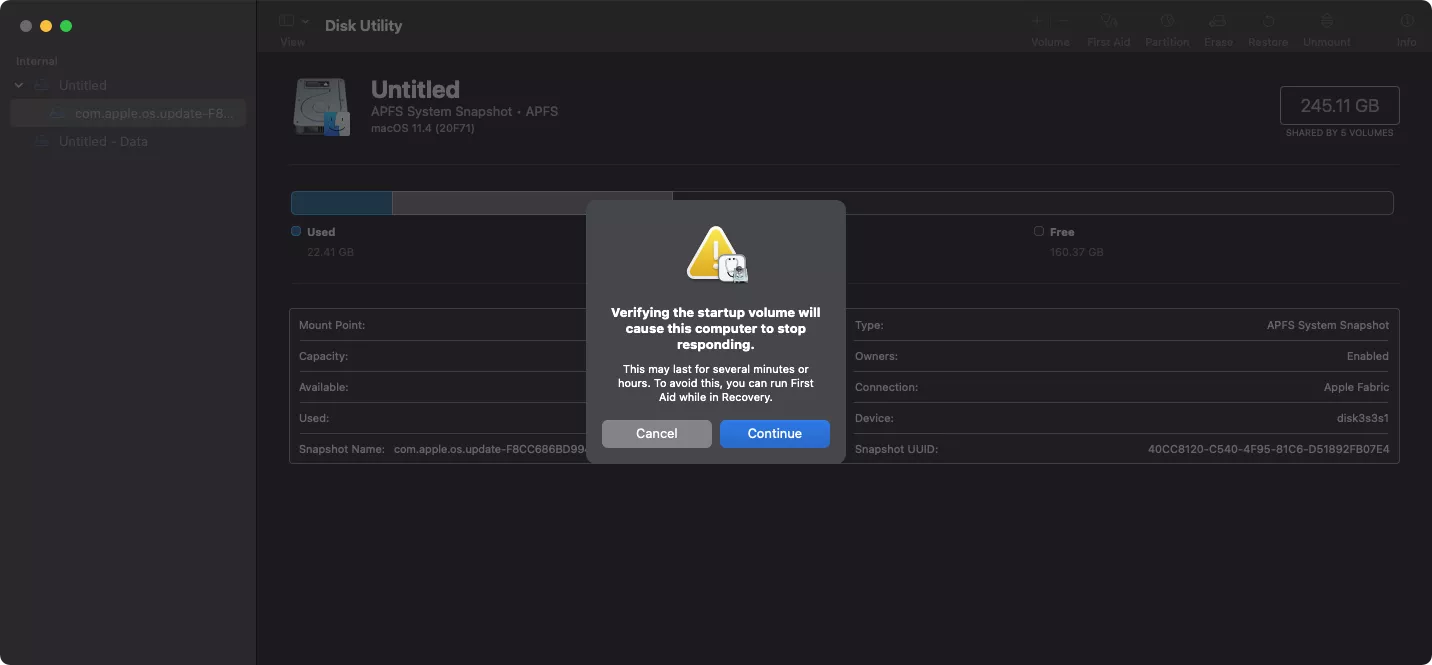
6. Wait for Commencement Aid to finish
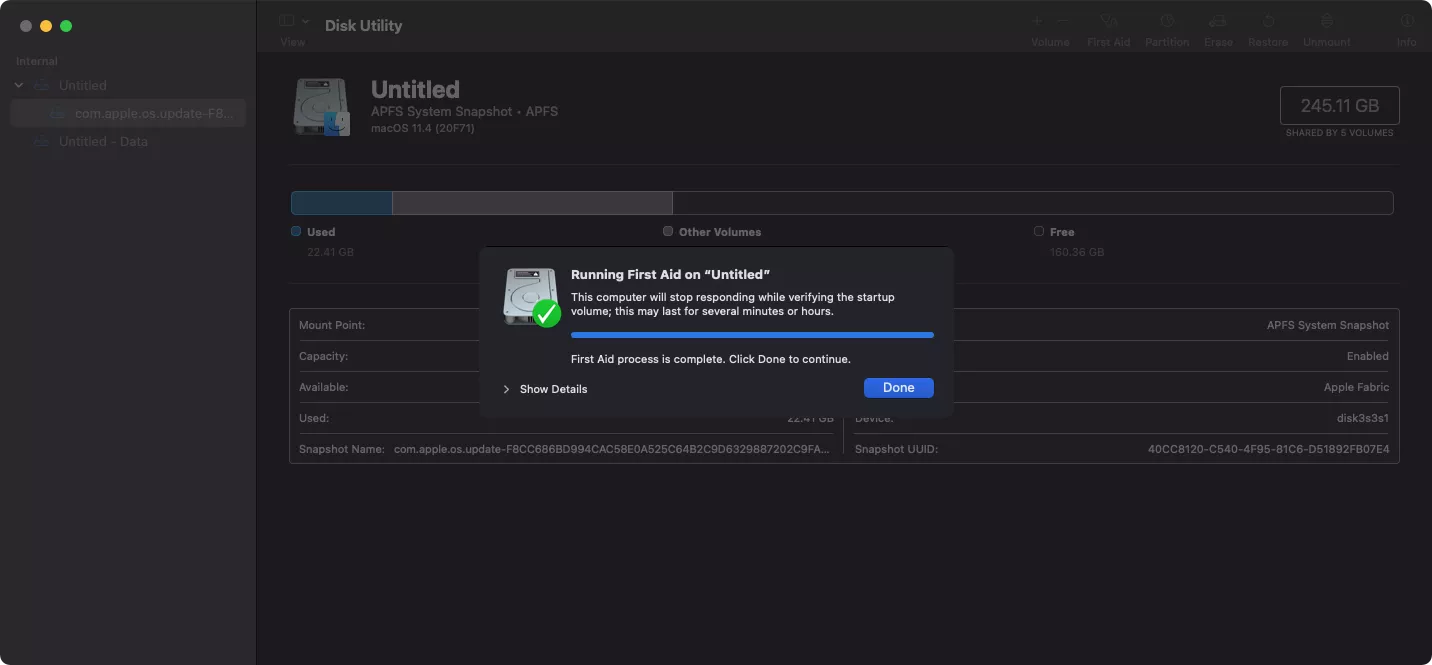
If all else fails, reinstall macOS
Undoubtedly the nuclear selection, merely if you can't fix your Mac'southward kernel panics, you lot might have mill reset your Mac. If the kernel panics still happens, and then your problem must be hardware-related – including third-party peripherals. To reset your Mac, you'll need to enter Recovery mode.

Here'southward how to put an Intel Mac in Recovery manner:
- Turn off your Mac
- Turn it dorsum on, and immediately printing and concur Cmd+R
- Release the keys when you run across the Apple logo
Here's how to put an M1 Mac in Recovery mode:
- Turn off your Mac
- Press and hold the ability button until you see Loading startup options
- Select Options to get into Recovery
Talk to a professional
If you're unable to fix your Mac's kernel panics, y'all might have to accept it to a repair shop or talk to a professional support squad similar MacKeeper'south Premium Services. Whether y'all've got a MacBook, iMac, Mac mini or whatsoever other model, they can assist you with any problems y'all might be having, including kernel panics.
Merely hopefully, the tips in the guide will be plenty to become your Mac up and running again, without any unexpected restarts.
Read more than:
- How to Fix Recovery Manner if Information technology's Not Working
- Mac Keeps Restarting Considering of a Problem
- Mac Keeps Freezing? Uncomplicated Steps To Set A Frozen Mac
Source: https://mackeeper.com/blog/kernel-panics-in-mac-possible-reasons-and-troubleshooting/
0 Response to "How to Read a Panic Report Mac"
Postar um comentário